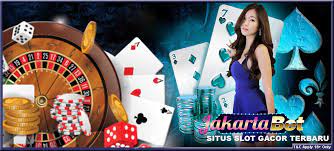Introduction
The Joker card, often seen as a wild card in various card games, is more than just a playful addition to a deck of playing cards. It embodies a rich history, cultural significance, and a multitude of interpretations across different jokercard.ca balance. From its origins in the 19th century to its role in modern games and popular culture, the Joker card stands out as a fascinating symbol.
Historical Background
The Joker card made its debut in the mid-1800s during the development of the game of Euchre in the United States. Initially known as the “Best Bower,” it was introduced as a trump card to help players gain an advantage. Over time, the Joker evolved, losing its specific ties to Euchre and gaining a more generalized role in various card games. By the late 19th century, the Joker had become a standard part of the 52-card deck, often appearing in both gambling and non-gambling games.
Design and Symbolism
Typically, the Joker card features a colorful, whimsical design that embodies the essence of fun and unpredictability. The imagery can vary significantly depending on the deck, but common themes include jesters, clowns, or harlequins, symbolizing trickery, humor, and chaos. The card is often adorned with bright colors, intricate patterns, and exaggerated facial expressions, making it visually distinct from the other cards in the deck.
The Joker’s dual nature is emblematic of its role in games. It can act as a wild card, substituting for any other card to complete a hand or achieve a goal. This adaptability allows players to change the dynamics of the game, often leading to surprising twists and outcomes. In this way, the Joker embodies both opportunity and uncertainty.
Role in Card Games
The Joker card serves various functions across different card games. In games like Poker, it may be used as a wild card, enhancing a player’s chances of forming a strong hand. In games such as Rummy, it can serve as a substitute for any card, allowing players to complete sets and runs more easily.
In contrast, some games choose to exclude the Joker entirely, adhering to traditional rules. This exclusion highlights the card’s optional nature; players can choose to embrace its chaos or adhere to the established order of the game.
Cultural Significance
Beyond the realm of gaming, the Joker card has permeated popular culture, often symbolizing chaos and unpredictability. It has appeared in literature, films, and art, often representing the trickster archetype—a character who disrupts the status quo and challenges societal norms.
One of the most iconic representations of the Joker card is in the character of the Joker from the Batman franchise. This character embodies madness, anarchy, and the darker aspects of human nature, further solidifying the Joker’s status as a powerful symbol in modern culture.
Conclusion
The Joker card is a multifaceted symbol, bridging the worlds of gaming, culture, and psychology. Its origins as a simple playing card have evolved into a representation of chaos, unpredictability, and the playful nature of life. Whether you see it as a tool for strategic advantage in a game or as a cultural icon, the Joker card invites us to embrace the unexpected and celebrate the unpredictable twists that life can bring.
